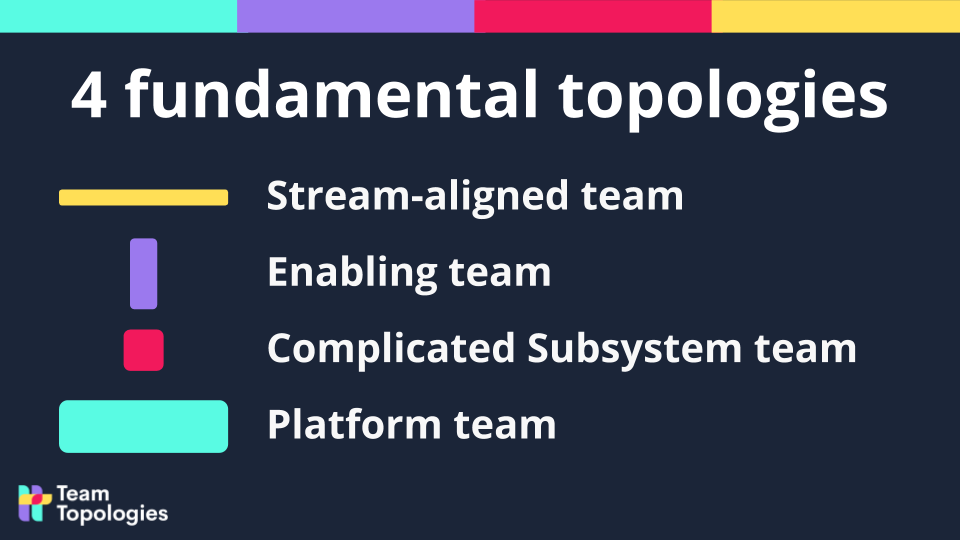Team Safety: Practical Techniques To Improve Team Engagement
By Team Lean Agile Intelligence

Practical Techniques To Improve Team Engagement
Team Safety, or psychological safety, is the concept of feeling safe to take interpersonal risks within a team. Google's Project Aristotle Report revealed that team safety is the number one factor that leads to higher team performance.
In this post, we explore the most effective ways to approach Team Safety, sharing key best practices that can be applied at different stages of your learning journey. By following these foundational techniques, you can equip yourself with the skills and knowledge needed to implement successful team strategies. However, it's important to remember that Team Safety is just one component of the bigger picture. To gain a comprehensive understanding of your team's current process status, we recommend taking advantage of our free agile assessment for Team Agility.
Team Safety and The Learning Journey
At Lean Agile Intelligence, we recognize Team Safety as the feeling of comfort within the team to engage other members and leadership without the fear of consequences. Our learning journey consists of four stages - Developing, Emerging, Adapting, and Optimizing - and in this post, we will delve into each of these stages, offering practical insights and strategies to help you improve your skills in this area.

Source - Kudo Box & Kudo Cards
Developing
Teams that are “developing” an understanding of the value of Team Safety and adopting the foundational techniques should focus on the following improvements
-
The What: Team members participate in team-building activities to get to know one another and start to build trust
-
The How: In Patrick Lenciono’s book “The Five Dysfunctions of a team” he details the 5 key dysfunctions that prevent a team from becoming high performing. At the base of the model is the “absence of trust.” In particular, vulnerability-based trust. More details can be found here .
-
In the above post, there are ten key steps listed based on Lencioni’s work. Those steps are:
-
Reduce the amount of gossip and talking about one another behind their backs.
-
Admit when you are wrong, make mistakes and readily apologize.
-
Let go of holding grudges from the past.
-
Understand and appreciate one another's work styles and strengths.
-
Be open and practice information sharing.
-
Take time to learn about each other on a more personal level.
-
Looks for ways to give credit to others.
-
Acknowledge and celebrate the successes of others.
-
Share openly both your failures and successes.
-
Give your team members the benefit of the doubt before jumping to a negative conclusion.
-
-
Consider adding items to your team working agreements that address the 10 points above. For example “Look for ways to give credit to others.” You can establish a team feedback system in an online tool, or share feedback in a group chat or at a daily standup. Here is a common practice we recommend called "Kudo Cards" from Management 3.0. Check out the image above regarding Kudo Cards.
-
-
-
The What: Team members feel comfortable asking for help
-
The How: Creating an environment where team members feel comfortable asking for help requires a culture of trust, collaboration, and support. Agile teams should actively promote and reinforce the importance of seeking help as a normal and expected behavior, and provide the necessary resources, training, and leadership support to encourage team members to seek help when needed without hesitation or fear of judgment. This can be done by participating in regular Agile ceremonies, such as daily stand-ups, sprint reviews, or retrospectives, where team members have the opportunity to ask for help or share challenges openly. Leading by example is another way for Scrum Masters and Agile Coaches could help team members feel more comfortable asking for help. When team leaders model the behavior of asking for help, it encourages team members to do the same.
-
-
The What: Mistakes are not held against team members
-
The How: It's important to remember that mistakes are an inevitable part of any team's journey, and promoting an environment where mistakes are not held against team members requires a culture of trust, accountability, and continuous learning. Agile teams should actively promote and reinforce the importance of learning from mistakes, provide support and resources for improvement, and celebrate team members' efforts to grow and develop as part of a positive and supportive team environment. Another great technique to use it to emphasize accountability and not blame! By shifting the focus from blaming individuals for mistakes to holding team collectively accountable for outcomes. When mistakes occur, the emphasis should be on identifying and addressing root causes, rather than assigning blame to individuals. Agile teams should use mistakes as opportunities to review processes, identify areas for improvement, and implement corrective actions collaboratively. Team members should feel supported rather than blamed when mistakes occur.
-

Emerging
Teams that are “emerging” beyond the foundational techniques of Team Safety and are embracing it as they become more proficient, should focus on the following improvements
-
The What: The team uses facilitation techniques to bring equal discussion and idea generation among team members, so everyone is engaged and has a say
-
The How: It’s important to understand the personalities of team members and how people operate within meetings and use this information to create meetings that have input from all attendees not just a few. The first step is to take time to design a meeting using a combination of divergent and convergent techniques. Divergent techniques are designed to bring out as many ideas as possible for brainstorming and convergent techniques are used to refine the ideas to action. You may want to choose different techniques based on the personalities of the team members. A starter list of techniques can be found here
-
-
The What: Team members promote an environment where it is safe to speak your mind; no idea is a bad one
-
The How: Here are some ways that the team can encourage team members to feel safe speaking their minds:
-
Establish Team Norms: Agile teams can collaboratively establish team norms or guidelines that explicitly promote open communication, trust, and respect among team members. These norms can include principles such as "everyone's opinion is valued," "we encourage diverse perspectives," or "no idea is considered bad." These norms can be agreed upon and displayed prominently in team spaces, and team members can be encouraged to refer to them during team interactions.
- Conduct Regular Retrospectives: Agile teams should conduct regular retrospectives, such as sprint retrospectives or project retrospectives, to reflect on team performance, processes, and collaboration. Retrospectives provide an opportunity for team members to openly discuss challenges, successes, and improvement ideas in a structured and facilitated manner. Retrospectives can foster open communication and help identify areas for improvement without blame or judgment.
-
Use Facilitation Techniques & Provide Feedback Training: Agile teams can use facilitation techniques, such as brainstorming sessions, affinity mapping, or anonymous idea-collection, to promote open communication and idea sharing. These techniques can encourage team members to freely express their thoughts and ideas, and prevent any single idea from dominating the discussion or discouraging others from sharing their opinions. Providing feedback training also allows team members to develop effective communication skills and learn how to give and receive feedback while creating a culture where feedback is welcomed and valued as an opportunity for growth and improvement.
-
-
-
The What: The team is not afraid to discuss difficult issues
-
The How: Agile teams should continually reinforce the importance of open and honest communication, trust-building, and constructive conflict resolution to foster a culture of transparency, accountability, and continuous improvement. Here are some ways that teams can promote such an environment:
-
Set Clear Expectations: Agile teams should establish clear expectations around open and honest communication from the outset. This includes setting the expectation that difficult issues or challenges should be openly discussed and not ignored or swept under the rug. Teams can establish ground rules or team norms that explicitly state the importance of addressing difficult issues head-on, with a focus on finding solutions rather than assigning blame.
-
Provide Structured Forums for Discussion: Agile teams can provide structured forums or mechanisms for team members to discuss difficult issues in a safe and supportive environment. This can include team retrospectives, where team members can reflect on challenges and discuss potential improvements, or regular team meetings where team members are encouraged to share concerns, roadblocks, or obstacles. These forums can provide a structured space for team members to raise difficult issues and collaborate on finding solutions.
-
Use Facilitated Discussions: Agile teams can use facilitation techniques, such as structured discussions or facilitated conversations, to create a safe space for discussing difficult issues. Facilitators can provide guidance and structure to ensure that discussions are constructive, respectful, and focused on finding solutions. Facilitated discussions can also help manage emotions and prevent discussions from becoming overly confrontational or unproductive.
-
Encourage Diverse Perspectives: Agile teams should actively encourage diverse perspectives and opinions when discussing difficult issues. Team members should be encouraged to share their unique viewpoints and experiences, and team leaders should foster an inclusive environment where all opinions are respected and valued. Encouraging diverse perspectives can help uncover blind spots, identify creative solutions, and promote open-mindedness in discussing difficult issues.
-
Provide Conflict Resolution Training: Agile teams can provide conflict resolution training to team members to equip them with the skills to manage difficult conversations effectively. Conflict resolution training can help team members understand how to express their opinions assertively, actively listen to others, and work towards finding mutually agreeable solutions. Providing conflict resolution training can empower team members to engage in constructive discussions and manage difficult issues in a positive and productive manner.
-
-
-
The What: The team doesn't hesitate to engage in constructive conflict because there is a common understanding it is for the best intentions
-
The How: The second dysfunction in the model stated in Lencioni’s book is the Fear of Conflict. On the surface, it may seem like a good thing to not have conflict but this dysfunction is specifically meaning the lack of “Constructive Conflict.” Without constructive conflict, teams cannot truly innovate and operate as a team. If people are afraid to disagree then ideas go unchallenged and the wisdom and ideas of the group do not emerge resulting in "Artificial Harmony.”
-
* * * * * *
"Google's Project Aristotle Report revealed that team safety is the number one factor that leads to higher team performance."
* * * * * *
Adapting
Teams that are “adapting” the Team Safety practice to extract the full benefit, should focus on the following improvements
-
The What: The team is comfortable escalating impediments that require leadership assistance
-
The How: It's essential to establish an environment where team members feel comfortable escalating impediments that require leadership assistance without fear of negative consequences. Here are some strategies that team could implement to establish this sense of safety:
-
Define Clear Escalation Paths: Agile teams should establish clear and well-defined escalation paths for team members to raise and address impediments that require leadership assistance. This can include designated channels or procedures for reporting and escalating issues to team leaders, managers, or other relevant stakeholders. It's important to ensure that team members are aware of these escalation paths and feel comfortable using them when needed. This can also be done by providing training and guidance for the team.
-
Establish a Supportive Leadership Culture: Agile leaders should establish a supportive culture where team members feel comfortable approaching leadership for assistance. This can include actively seeking feedback from team members, being approachable and responsive, and demonstrating empathy and understanding toward team members' challenges. Agile leaders should prioritize addressing escalated impediments promptly and effectively, and actively communicate the actions taken to resolve the issues back to the team members.
-
Collaborate on Solutions: When impediments are escalated to leadership, Agile teams should promote a collaborative approach to finding solutions. This can include involving relevant stakeholders in problem-solving discussions, seeking input and feedback from team members, and jointly developing action plans to address the issues. Collaborating on solutions can not only resolve the impediments but also foster a sense of ownership and teamwork among team members.
-
Recognize and Appreciate Escalation Efforts: Agile teams should recognize and appreciate team members' efforts in escalating impediments that require leadership assistance. Recognizing and appreciating team members for their proactive communication and efforts to resolve issues can reinforce a culture where escalation is encouraged and valued. This can include acknowledging team members' contributions in team meetings, providing positive feedback, and expressing appreciation for their efforts in addressing impediments.
-
-
-
The What: The team is comfortable being honest about the progress of their initiative, so there are no surprises
-
The How: Start by discussing the concept of “Constructive Conflict” as a team and add some ideas to your working agreements about how to healthily engage in constructive conflict. In addition, it’s a good idea to create working agreements with management so everyone is aligned to drive to high performance.
-

Source - Core ideas in Team Topologies
Optimizing
Teams “optimizing” the knowledge sharing of the Team Safety practice learnings across the enterprise should focus on the following improvements
-
The What: The team feels safe to try a new experiment (i.e., process change, technology adoption, deliverable) with the risk it may fail so that they can accrue learnings
-
The How: Without the ability to learn from failure, it will be impossible to innovate. It’s critical that leadership In the organization works with the team to create the right environment where innovation can thrive. If a team is using Scrum, it’s the scrum masters responsibility to help develop this environment for the team, and working with leadership outside the team is a key responsibility stated in the scrum guide
-
* * * * * *
"Without the ability to learn from failure, it will be impossible to innovate."
* * * * * *
Conclusion
In today's fast-paced work environment, high-performing teams are essential for achieving success. One crucial factor that contributes to their success is Team Safety. This concept refers to the creation of a safe and secure environment that encourages interpersonal risk-taking, fosters trust, and supports constructive conflict. To achieve this goal, teams can employ a variety of techniques, such as team-building activities and facilitation techniques, to enhance their sense of safety when trying out new ideas. By prioritizing and actively working on building team safety, teams can realize their full potential and boost their performance with team engagement. To start this journey, consider taking a free agile assessment for Team Agility with your team, and take the first step towards enhancing your team's performance.